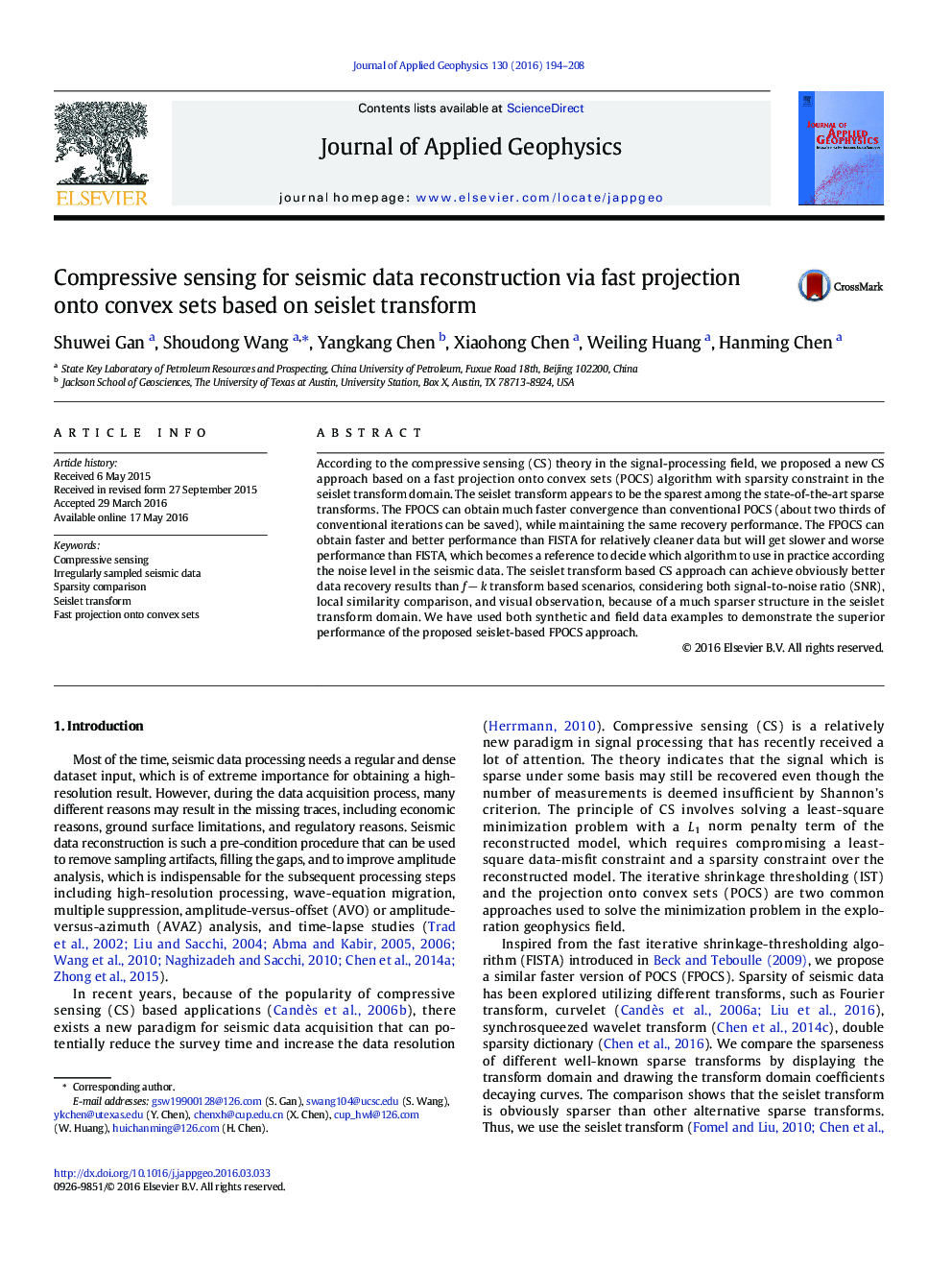| Article ID | Journal | Published Year | Pages | File Type |
|---|---|---|---|---|
| 6446975 | Journal of Applied Geophysics | 2016 | 15 Pages |
Abstract
According to the compressive sensing (CS) theory in the signal-processing field, we proposed a new CS approach based on a fast projection onto convex sets (POCS) algorithm with sparsity constraint in the seislet transform domain. The seislet transform appears to be the sparest among the state-of-the-art sparse transforms. The FPOCS can obtain much faster convergence than conventional POCS (about two thirds of conventional iterations can be saved), while maintaining the same recovery performance. The FPOCS can obtain faster and better performance than FISTA for relatively cleaner data but will get slower and worse performance than FISTA, which becomes a reference to decide which algorithm to use in practice according the noise level in the seismic data. The seislet transform based CS approach can achieve obviously better data recovery results than f â k transform based scenarios, considering both signal-to-noise ratio (SNR), local similarity comparison, and visual observation, because of a much sparser structure in the seislet transform domain. We have used both synthetic and field data examples to demonstrate the superior performance of the proposed seislet-based FPOCS approach.
Keywords
Related Topics
Physical Sciences and Engineering
Earth and Planetary Sciences
Geophysics
Authors
Shuwei Gan, Shoudong Wang, Yangkang Chen, Xiaohong Chen, Weiling Huang, Hanming Chen,
